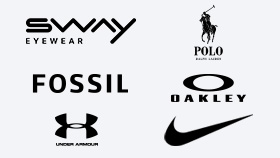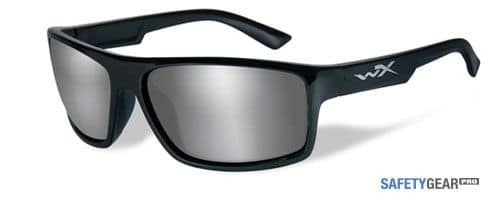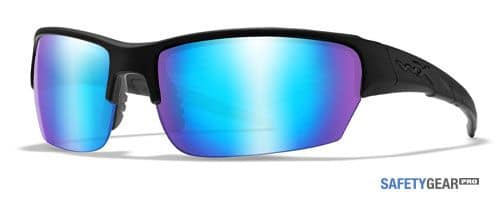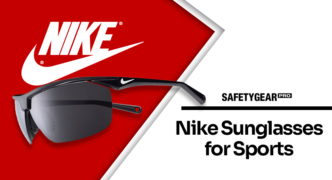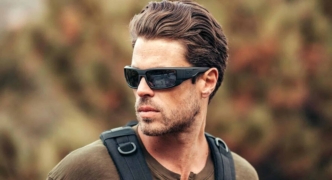
Prescription sports sunglasses have become an indispensable accessory for athletes and outdoor enthusiasts who require vision correction while engaging in their favorite activities. These specialized eyewear provide protection against harmful UV rays and enhance visual clarity and performance.
However, choosing the right lenses for your prescription sports sunglasses can be daunting. In this article, we will explore the various lens options available and help you determine which ones are best suited for your needs.
Polarized Lenses
Polarized lenses are a popular choice for prescription sports sunglasses because they reduce glare from reflective surfaces like snow, water, and pavement. This feature is especially beneficial for athletes participating in sports such as fishing, skiing, and cycling, where glare can be distracting and potentially dangerous.
Polarized lenses enhance contrast and visibility, making spotting obstacles easier and improving overall performance.
Photochromic Lenses
Photochromic or transition lenses are a versatile option for prescription sports sunglasses. These lenses automatically adjust their tint in response to changing light conditions.
They become darker when exposed to sunlight and lighter in low-light situations. This adaptive feature ensures optimal vision in various environments, making them suitable for sports that take place both indoors and outdoors.
Prescription Inserts
Some prescription sports sunglasses come with removable prescription inserts or prescription-ready frames. You can customize these inserts to your prescription and effortlessly switch them between different pairs of sports sunglasses.
This option provides the flexibility to use the same lenses for multiple activities and eliminates the need for separate prescription sports sunglasses for each sport.
Impact-Resistant Lenses
Sports sunglasses should offer superior durability and impact resistance to protect your eyes during high-intensity activities. Polycarbonate or Trivex lenses are popular choices for their lightweight yet robust construction.
These materials undergo design to withstand impact, rendering them ideal for sports such as basketball, tennis, and racquetball, where fast-moving projectiles are common.
Anti-Fog Coating
Anti-fog coatings are a valuable addition to prescription sports sunglasses for athletes who engage in activities that generate a lot of heat and moisture, such as running or mountain biking.
These coatings prevent condensation from forming on the lenses, ensuring clear vision even in challenging conditions. Anti-fog coatings are particularly beneficial when paired with well-ventilated frames.
UV Protection
UV protection is non-negotiable when it comes to prescription sports sunglasses. Extended exposure to harmful UV rays can lead to serious eye conditions, including cataracts and macular degeneration. Look for prescription sunglasses that offer UVA and UVB protection to shield your eyes from these harmful rays and reduce the risk of long-term damage.
Tint Options
Tinted lenses can enhance your sports experience by providing specific benefits based on the tint color. For instance, yellow or orange tints can improve contrast in low-light conditions, making them suitable for early morning or evening activities. Gray or brown tints offer neutral color perception and are excellent for outdoor sports.
Choosing the right lenses for prescription sports sunglasses is crucial for eye protection and optimal performance. You can enjoy your favorite activities with improved vision and confidence with the right lenses.
Ready to Upgrade Your Prescription Sports Sunglasses?
When finding the perfect sports eyewear with top-notch safety and performance, look no further than SafetyGear Pro. Explore our range of prescription sports sunglasses and experience the ultimate combination of style, protection, and clarity.
FAQs
Do polarized lenses block UV?
Polarized lenses do not offer UV ray protection on their own. However, they feature a specialized coating that filters light and diminishes glare. These lenses are particularly beneficial for improving visibility in sunny conditions by reducing the glare caused by surfaces such as water, car windows, and the sun itself.
Do photochromic lenses work in the car?
Photochromic lenses rely on UV rays to darken, but when inside a car, the windshield blocks these rays, preventing the lenses from darkening. This limitation means they may not be effective at transitioning indoors when driving.
Are anti-fog lenses worth it?
Investing in anti-fog lenses is worth the money. Specially designed lenses ensure they remain fog-free, eliminating the need for repeated applications of anti-fog products. Not only do they offer added convenience, but they also prove to be a cost-effective alternative compared to purchasing separate anti-fog solutions.
What color tint is best for sunglasses?
Green-tinted sunglasses offer superior contrast compared to gray lenses and provide more accurate color transmission than brown lenses. They are versatile for sunny and low-light settings, making them ideal for various activities such as water sports, outdoor sports, cycling, and skiing. These lenses effectively protect and provide comfort for your eyes from foggy and cloudy to bright and sunny days.
Are photochromic lenses good for cycling?
While cycling, it’s not just about shielding your eyes from the sun; during darker, wetter winter months, you also want to protect them from grit, salt, and rain. This is where photochromic lenses adapt to changing light conditions and become an excellent choice.















